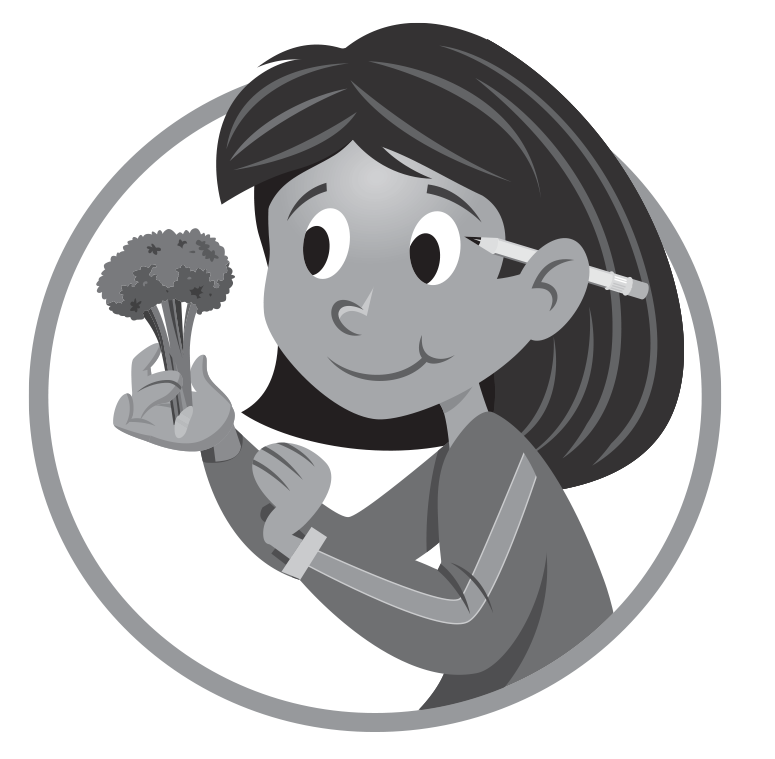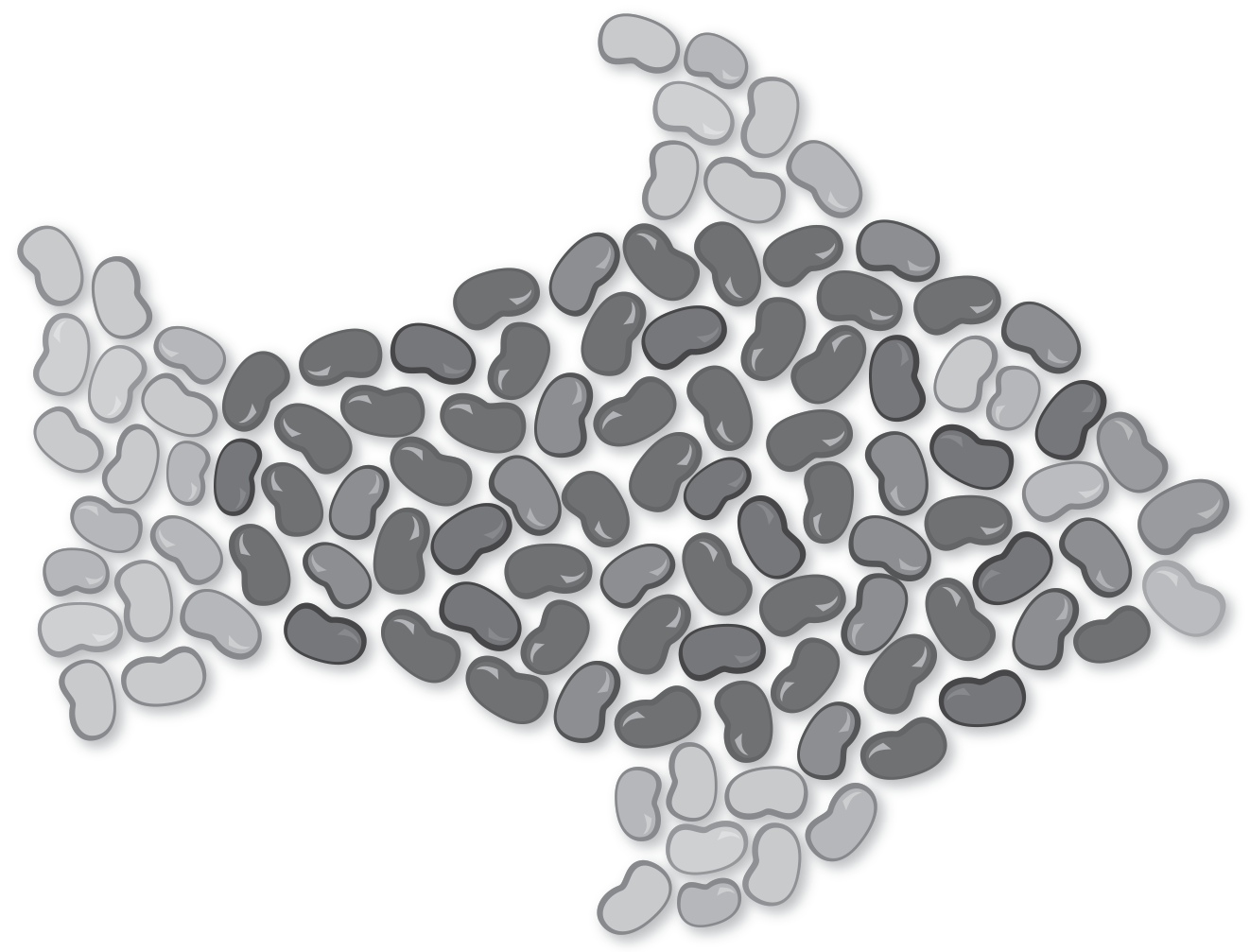Supreme Seeds
Students observe various types of seed, discover the many uses of seeds, taste edible seeds, and make a seed mosaic.
Background
Lesson Activities
Recommended Companion Resources
Credits
Author
Shaney Emerson and Michelle Risso | California Foundation for Agriculture in the Classroom
Acknowledgements
- Activity 1 authored by Sue Knott and provided by Minnesota Agriculture in the Classroom
-
Activity 2 provided by California Foundation for Agriculture in the classroom. Funding provided by a grant from the Network for a Healthy California.
Executive Director: Judy Culbertson
Illustrator: Erik Davison
Layout & Design: Nina Danner
Copy Editor: Leah Rosasco
Sources
- http://easyscienceforkids.com/all-about-germination/
- http://corn.agronomy.wisc.edu/AA/A026.aspx
Standards
Texas Content Area Standards
-
ELA: K.110.2.b.1
Developing and sustaining foundational language skills: listening, speaking, discussion, and thinking - - oral language. The student develops oral language through listening, speaking, and discussion.
- ELA: K.110.2.b.1.C: share information and ideas by speaking audibly and clearly using the conventions of language
- ELA: K.110.2.b.1.D: work collaboratively with others by following agreed-upon rules for discussion, including taking turns;
-
ELA: 1.110.3.b.1
Developing and sustaining foundational language skills: listening, speaking, discussion, and thinking - - oral language. The student develops oral language through listening, speaking, and discussion.
- ELA: 1.110.3.b.1.C: share information and ideas about the topic under discussion, speaking clearly at an appropriate pace and using the conventions of language
- ELA: 1.110.3.b.1.D: work collaboratively with others by following agreed-upon rules for discussion, including listening to others, speaking when recognized, and making appropriate contributions
-
ELA: 2.110.4.b.1
Developing and sustaining foundational language skills: listening, speaking, discussion, and thinking -- oral language. The student develops oral language through listening, speaking, and discussion.
- ELA: 2.110.4.b.1.C: share information and ideas that focus on the topic under discussion, speaking clearly at an appropriate pace and using the conventions of language
- ELA: 2.110.4.b.1.D: work collaboratively with others by following agreed-upon rules for discussion, including listening to others, speaking when recognized, making appropriate contributions, and building on the ideas of others
-
Social Studies: 2.113.13.c.16
Social studies skills. The student communicates in written, oral, and visual forms. The student is expected to:
- Social Studies: 2.113.13.c.16.E: communicate information visually, orally, or in writing based on knowledge and experiences in social studies
- Social Studies: 2.113.13.c.16.F: create written and visual material such as stories, maps, and graphic organizers to express ideas
-
Social Studies: K.113.11.c.14
Social studies skills. The student communicates in oral and visual forms. The student is expected to:
- Social Studies: K.113.11.c.14.C: communicate information visually, orally, or in writing based on knowledge and experiences in social studies
- Social Studies: K.113.11.c.14.D: create and interpret visuals, including pictures and maps
-
Social Studies: 1.113.12.c.17
Social studies skills. The student communicates in oral, visual, and written forms. The student is expected to:
- Social Studies: 1.113.12.c.17.C: communicate information visually, orally, or in writing based on knowledge and experiences in social studies
- Social Studies: 1.113.12.c.17.D: create and interpret visual and written material
-
Science: 2.112.4.b.1
Scientific and engineering practices. The student asks questions, identifies problems, and plans and safely conducts classroom, laboratory, and field investigations to answer questions, explain phenomena, or design solutions using appropriate tools and models. The student is expected to:
- Science: 2.112.4.b.1.E: collect observations and measurements as evidence
- Science: 2.112.4.b.1.F: record and organize data using pictures, numbers, words, symbols, and simple graphs
-
Science: K.112.2.b.1
Scientific and engineering practices. The student asks questions, identifies problems, and plans and safely conducts classroom, laboratory, and field investigations to answer questions, explain phenomena, or design solutions using appropriate tools and models. The student is expected to:
- Science: K.112.2.b.1.E: collect observations and measurements as evidence.
- Science: K.112.2.b.1.F: record and organize data using pictures, numbers, words, symbols, and simple graphs.
-
Science: K.112.2.b.2
Scientific and engineering practices. The student analyzes and interprets data to derive meaning, identify features and patterns, and discover relationships or correlations to develop evidence-based arguments or evaluate designs. The student is expected to:
- Science: K.112.2.b.2.B: analyze data by identifying significant features and patterns.
-
Science: K.112.2.b.3
Scientific and engineering practices. The student develops evidence-based explanations and communicates findings, conclusions, and proposed solutions. The student is expected to:
- Science: K.112.2.b.3.A: develop explanations and propose solutions supported by data and models.
- Science: K.112.2.b.3.B: communicate explanations and solutions individually and collaboratively in a variety of settings and formats.
-
Science: K.112.2.b.4
Scientific and engineering practices. The student knows the contributions of scientists and recognizes the importance of scientific research and innovation on society. The student is expected to:
- Science: K.112.2.b.4.A: explain how science or an innovation can help others.
-
Science: K.112.2.b.5
Recurring themes and concepts. The student uses recurring themes and concepts to make connections across disciplines. The student is expected to:
- Science: K.112.2.b.5.A: identify and use patterns to describe phenomena or design solutions.
-
Science: K.112.2.b.6
Matter and its properties. The student knows that objects have physical properties that determine how they are described and classified. The student is expected to identify and record observable physical properties of objects, including shape, color, texture, and material, and generate ways to classify objects.
- Science: K.112.2.b.6: Matter and its properties. The student knows that objects have physical properties that determine how they are described and classified. The student is expected to identify and record observable physical properties of objects, including shape, color, texture, and material, and generate ways to classify objects.
-
Science: K.112.2.b.13
Organisms and environments. The student knows that organisms resemble their parents and have structures and undergo processes that help them interact and survive within their environments. The student is expected to:
- Science: K.112.2.b.13.C: identify and record the changes from seed, seedling, plant, flower, and fruit in a simple plant life cycle.
-
Science: 1.112.3.b.1
Scientific and engineering practices. The student asks questions, identifies problems, and plans and safely conducts classroom, laboratory, and field investigations to answer questions, explain phenomena, or design solutions using appropriate tools and models. The student is expected to:
- Science: 1.112.3.b.1.E: collect observations and measurements as evidence.
- Science: 1.112.3.b.1.F: record and organize data using pictures, numbers, words, symbols, and simple graphs.
-
Science: 1.112.3.b.2
Scientific and engineering practices. The student analyzes and interprets data to derive meaning, identify features and patterns, and discover relationships or correlations to develop evidence-based arguments or evaluate designs. The student is expected to:
- Science: 1.112.3.b.2.A: identify basic advantages and limitations of models such as their size, properties, and materials.
-
Science: 1.112.3.b.3
Scientific and engineering practices. The student develops evidence-based explanations and communicates findings, conclusions, and proposed solutions. The student is expected to:
- Science: 1.112.3.b.3.A: develop explanations and propose solutions supported by data and models.
- Science: 1.112.3.b.3.B: communicate explanations and solutions individually and collaboratively in a variety of settings and formats.
-
Science: 1.112.3.b.4
Scientific and engineering practices. The student knows the contributions of scientists and recognizes the importance of scientific research and innovation for society. The student is expected to:
- Science: 1.112.3.b.4.A: explain how science or an innovation can help others.
-
Science: 1.112.3.b.5
Recurring themes and concepts. The student uses recurring themes and concepts to make connections across disciplines. The student is expected to:
- Science: 1.112.3.b.5.A: identify and use patterns to describe phenomena or design solutions.
- Science: 1.112.3.b.5.E: identify forms of energy and properties of matter.
-
Science: 1.112.3.b.6
Matter and its properties. The student knows that objects have physical properties that determine how they are described and classified. The student is expected to:
- Science: 1.112.3.b.6.A: classify objects by observable physical properties, including shape, color, and texture, and attributes such as larger and smaller and heavier and lighter.
- Science: 1.112.3.b.6.B: explain and predict changes in materials caused by heating and cooling.
-
Science: 2.112.4.b.2
Scientific and engineering practices. The student analyzes and interprets data to derive meaning, identify features and patterns, and discover relationships or correlations to develop evidence-based arguments or evaluate designs. The student is expected to:
- Science: 2.112.4.b.2.A: identify basic advantages and limitations of models such as their size, properties, and materials
-
Science: 2.112.4.b.3
Scientific and engineering practices. The student develops evidence-based explanations and communicates findings, conclusions, and proposed solutions. The student is expected to:
- Science: 2.112.4.b.3.A: develop explanations and propose solutions supported by data and models
- Science: 2.112.4.b.3.B: communicate explanations and solutions individually and collaboratively in a variety of settings and formats
-
Science: 2.112.4.b.5
Recurring themes and concepts. The student uses recurring themes and concepts to make connections across disciplines. The student is expected to:
- Science: 2.112.4.b.5.A: identify and use patterns to describe phenomena or design solutions
- Science: 2.112.4.b.5.E: identify forms of energy and properties of matter
-
Science: 2.112.4.b.6
Matter and its properties. The student knows that matter has physical properties that determine how it is described, classified, and used. The student is expected to:
- Science: 2.112.4.b.6.C: demonstrate that small units such as building blocks can be combined or reassembled to form new objects for different purposes and explain the materials chosen based on their physical properties
-
Science: 2.112.4.b.13
Organisms and environments. The student knows that organisms have structures and undergo processes that help them interact and survive within their environments. The student is expected to:
- Science: 2.112.4.b.13.A: identify the roots, stems, leaves, flowers, fruits, and seeds of plants and compare how those structures help different plants meet their basic needs for survival

